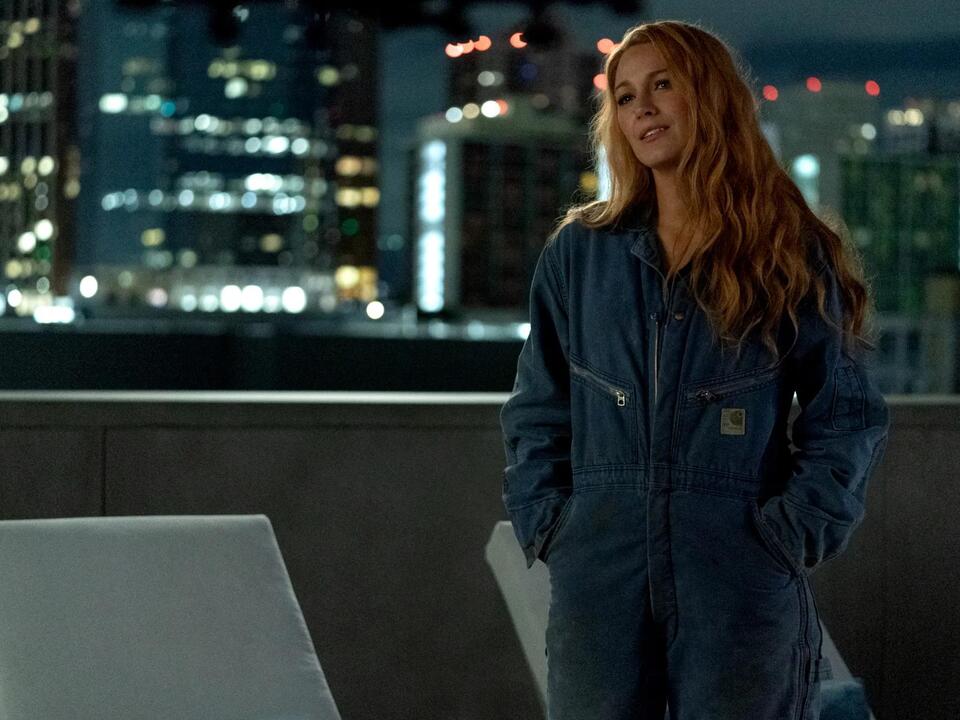Physical Address
304 North Cardinal St.
Dorchester Center, MA 02124
Physical Address
304 North Cardinal St.
Dorchester Center, MA 02124

This column contains spoilers about the movie “It Ends with Us.” If you are a victim of domestic violence, the National Domestic Violence Hotline allows you to speak confidentially with trained advocates online or by phone (800-799-7233). They can help survivors develop a plan to achieve safety for themselves and their children.
For a movie centered on ending the cycle of domestic violence, “It Ends with Us” surprisingly had me smiling a lot while watching. There were moments of laughter and even blushing, particularly at the beginning. This lighthearted start provides a striking perspective on the complex dynamics behind toxic and abusive relationships.
Initially, I approached the movie, based on Colleen Hoover’s book, with skepticism. The promotional materials gave it the appearance of a typical chick flick, with two handsome men vying for the attention of a beautiful woman, Lily Bloom, played by Blake Lively. Knowing that the film’s core is about domestic violence, I wondered why the marketing didn’t highlight this crucial aspect to educate the audience.
“It Ends with Us” does, however, effectively illustrate some key aspects of domestic violence that can be enlightening for viewers who might not fully understand the nuances of abusive relationships. The film excels in explaining why people enter abusive relationships. When Lily meets Ryle Kincaid, portrayed by Justin Baldoni, who also directed the film, he seems like the perfect catch – a charming, fit neurosurgeon with commitment issues, which initially appears romantic.
Ryle immediately pursues Lily despite her attempts to keep things platonic. He gradually breaks down her boundaries, a typical trait of abusers, and his relentless charm and persistence leave her unable to resist him. Their relationship quickly escalates into a whirlwind of passion, blending hot sex, fun outings, and cozy moments in his penthouse. Before long, they move in together and, eventually, get married.
Friends and family might not realize the toxic nature of such a relationship until the abuse becomes glaringly obvious. Many misunderstand that abusive relationships don’t start with abuse; physical violence isn’t the only or even the primary form of abuse at the onset. Abusers often mask their true nature with affection, romance, and great sex – what’s known as “love bombing.” Initially, Ryle’s abuse is subtle, manifesting as seemingly minor incidents like throwing a chair or accidents during cooking. Lily notices these red flags but rationalizes them, a common response among abused individuals, who often are gaslighted into believing such incidents are mere accidents or momentary lapses in temper.
Lily’s belief that Ryle is a fundamentally good man who occasionally loses control is another aspect that the movie portrays accurately. This dynamic is a common misconception: abusers often create good times to overshadow their abusive behavior. As Lily’s story unfolds, we also see flashbacks of her high school romance with Atlas Corrigan, played by Brandon Sklenar, which contrasts sharply with her relationship with Ryle.
Even though Lily reconnects with Atlas in adulthood, she doesn’t immediately leave Ryle because she’s caught in a trauma bond, a psychological trap common in abusive relationships. Abuse doesn’t happen all the time; it follows a cyclical pattern that manipulates victims into hoping for the “good times” to return. Eventually, when Ryle’s abuse escalates to sexual assault, Lily seeks solace in Atlas.
If you are a survivor of domestic violence, these scenes may be triggering. As Lundy Bancroft writes, “Abuse grows from attitudes and values, not feelings. The roots are ownership, the trunk is entitlement, and the branches are control.” The film adeptly illustrates this dynamic.
However, the movie does fall short in certain areas. It glosses over the harrowing reality of why victims stay in abusive relationships and how difficult it is to leave. The film shows Lily leaving Ryle after their daughter’s birth and declaring that his abuse “ends with us,” a poignant moment because Lily also grew up with an abusive father. Ryle’s calm acceptance of this declaration is unrealistic.
In real life, leaving an abuser is far more complicated. Statistics show that the most dangerous time for a domestic violence survivor is the first 18 months after leaving. Restraining orders often provide little protection against a determined abuser. As Bancroft notes, abusers need to relinquish control over their partners to change, not simply gain better self-control.
Post-separation abuse, including stalking, financial manipulation, and threats over child custody, is common. Capturing the full reality of this in a movie is challenging but crucial for true representation.
Unfortunately, the promotional efforts for “It Ends with Us” largely sidestep the topic of domestic violence. The cast and crew have missed an important opportunity to raise awareness about abuse and highlight available resources. Blake Lively, in particular, only responded to criticism by linking to a hotline after weeks of cheerful promotion of the film.
It’s frustrating that Hollywood often shies away from the serious conversations that such films could encourage. While it’s not Hollywood’s job to solve domestic violence, using the film’s platform to spread awareness could have made a significant impact.
Source: USA Today



